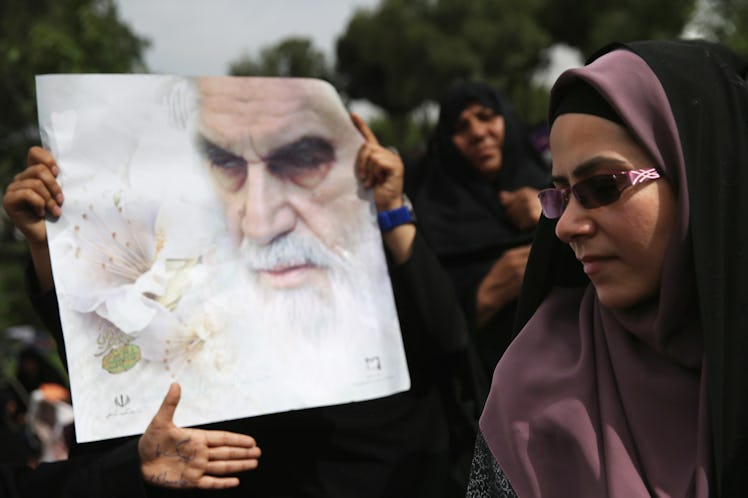
This Is Why People In Iran Are Protesting Against Their Government
Anti-government protests broke out in Iran last Thursday, Dec. 28, resulting in a death toll of at least 20 people, according to The Washington Post. With social media access being restricted for most Iranian citizens, many may be wondering, what are these Iran protests are about? What started out as a single-city protest against the economy for increased food and fuel prices has quickly escalated into a protest criticizing Iran's Islamic leadership spanning a number of cities in Iran.
The first series of protests started in the northern city of Mashhad, as Iranian citizens criticized the extreme increase — 40 percent — in food prices. In just six days, the protests have spread to over 80 cities, including Tehran, and have resulted in over 450 arrests, according to the BBC, and limited access to social media. News has spread thanks to citizen journalists and spectators in Iran who have posted videos through apps, like Telegram, and virtual private networks, or VPNs.
Some of the most distinguishable moments of the protests have been protesters setting fire to a seminary, or Hawza, in Takestan, and a 13-year-old boy being killed on Monday, Jan. 1, in Khomeynishahr. Other protesters have shouted “Death to the dictator!” in reference to the Supreme Leader Ayatollah Ali Khamenei, according to The Washington Post. According to Reuters, about 90 percent of those arrested have been under 25, showing a large demographic of young, dissatisfied Iranians. Aside from Iran's strict Islamic leadership, this is likely due to the unemployment rate among ages 15 to 29 being over 24 percent.
On Wednesday, Jan. 3, pro-government rallies were arranged in response to the outburst of international attention Iran had received. Iranian news outlets televised the pro-government demonstrators to convey that government support did indeed exist. While protesters burned photos of Khamenei, per The New York Daily News, pro-government protesters held up Iranian flags and photographs of Khamenei, according to The New York Times. Others held up signs that read “Death to seditionists” and chanted phrases like “We offer the blood in our veins to our leader," according to The New York Times.
Khamenei responded to the protests on Twitter and his official website on Jan. 2, blaming "enemies" of Iran for sparking the protests. His tweet read, "In recent events, enemies of #Iran have allied & used the various means they possess, including money, weapons, politics &intelligence services, to trouble the Islamic Republic." Many experts have said the "enemy" is in reference to President Donald Trump, among other world leaders, who has been critical of the Iranian leader in the past.
President Trump has repeatedly acknowledged the protests, and expressed his support for the protesters. Trump tweeted on Dec. 31, "Big protests in Iran. The people are finally getting wise as to how their money and wealth is being stolen and squandered on terrorism." In another tweet on Jan. 1, Trump said, "The great Iranian people have been repressed for many years. They are hungry for food & for freedom."
Some are skeptical of Trump's support for Iranian citizens, considering one of his first motions as president was the travel ban on many countries including Iran, which complicated the process by which Iranians could obtain visas and travel to the United States.
It's unclear how long the protests will continue, however, Iran has had it's fair share of long-lived protests in the past. The most famous was the 1979 Iranian revolution, and the latest were the protests during the 2009 presidential election, where at least 30 people were killed and thousands were arrested for opposing former President Mahmoud Ahmadinejad's win.
The outcome of these protests will likely impact President Trump and the Iranian leaders' relations on the Iran nuclear deal, in addition to permanently impacting young Iranians as they continue to fight for societal and economic change.